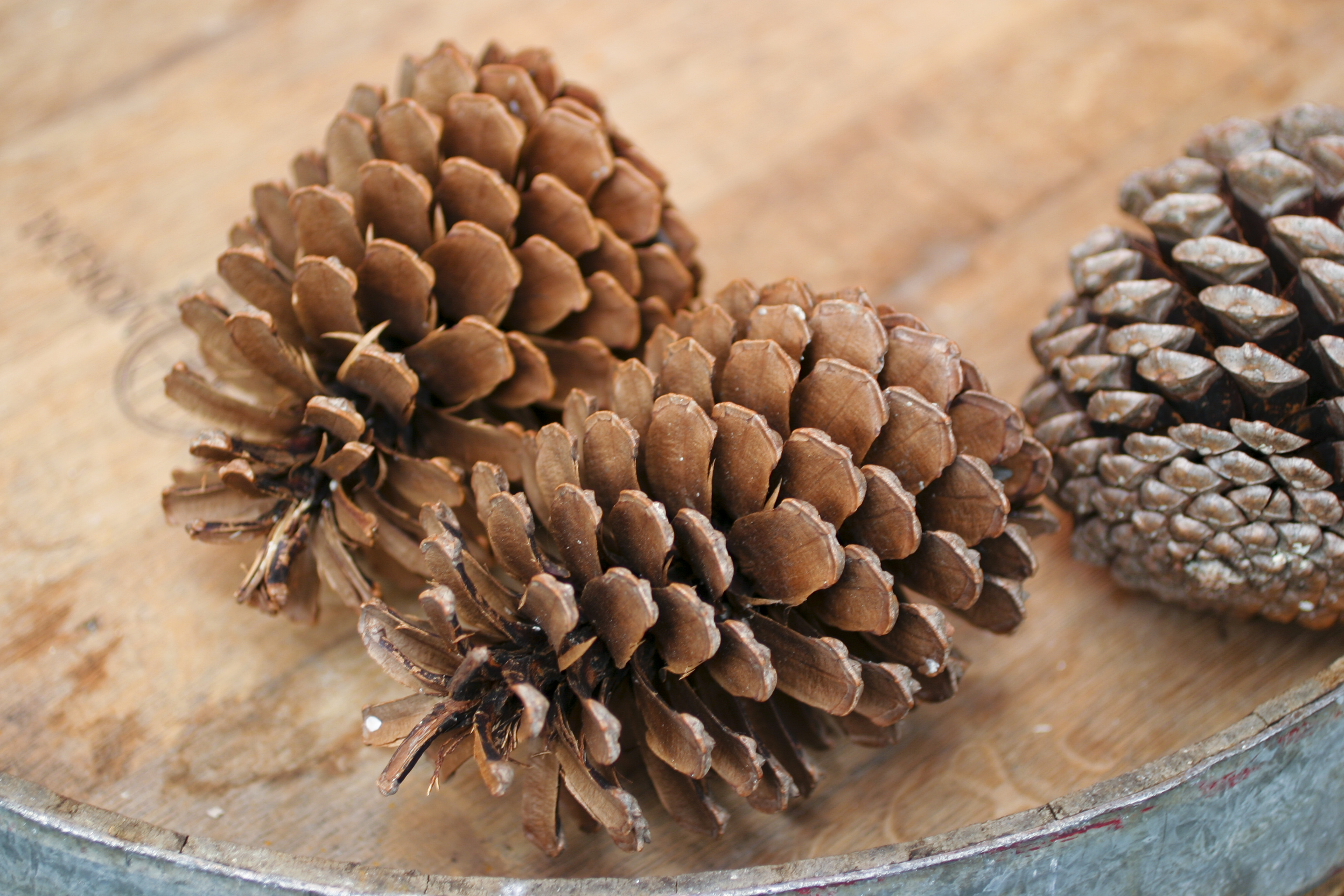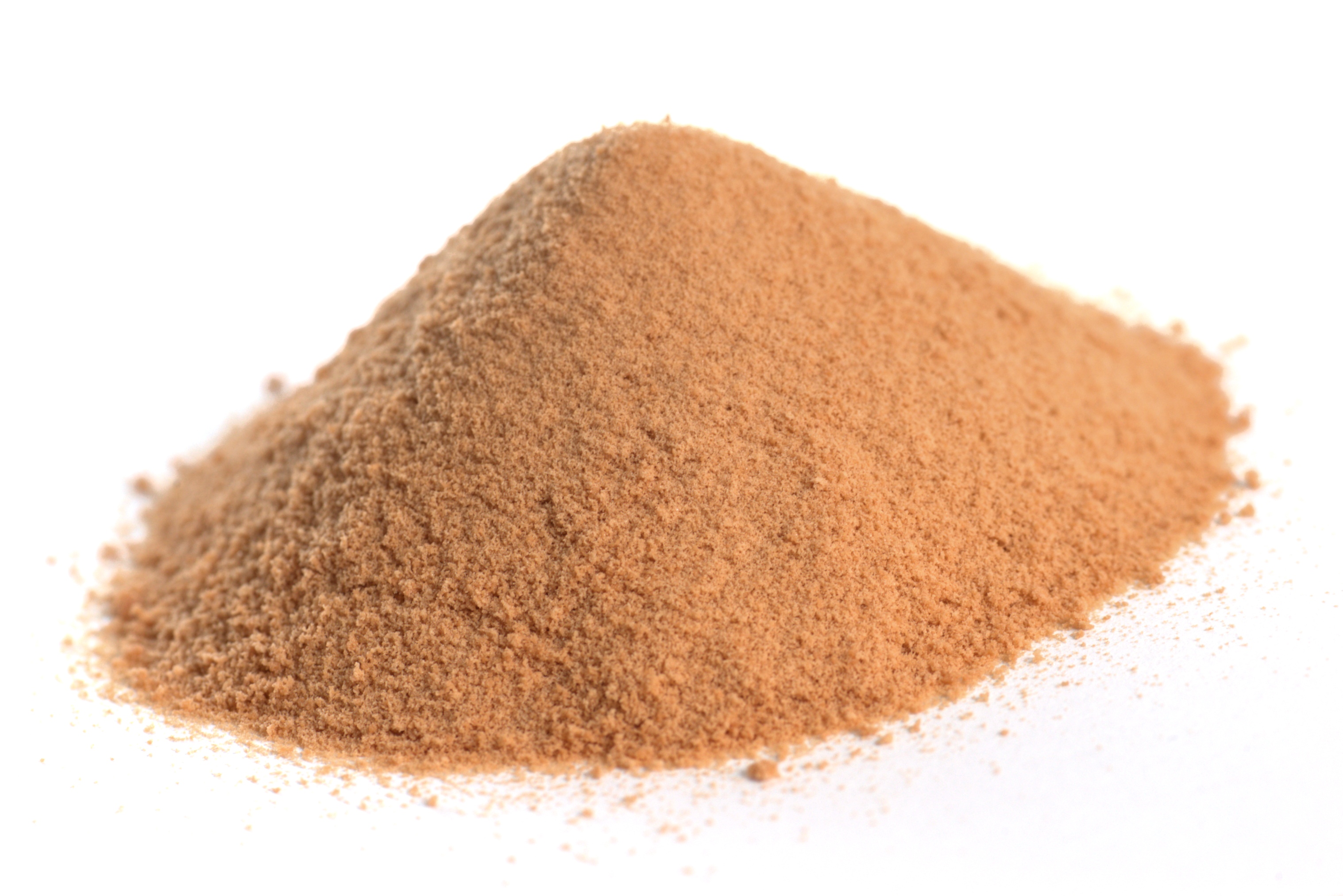|
Proanthocyanidin
Proanthocyanidins are a class of polyphenols found in many plants, such as cranberry, blueberry, and grape seeds. Chemically, they are oligomeric flavonoids. Many are oligomers of catechin and epicatechin and their gallic acid esters. More complex polyphenols, having the same polymeric building block, form the group of tannins. Proanthocyanidins were discovered in 1947 by Jacques Masquelier, who developed and patented techniques for the extraction of oligomeric proanthocyanidins from pine bark and grape seeds. Often associated with prevention of urinary tract infections (UTIs) by consuming cranberries, grape seeds or red wine, proanthocyanidins have not been conclusively shown as effective for preventing or treating UTIs. Distribution in plants Proanthocyanidins, including the lesser bioactive and bioavailable polymers (four or more catechins), represent a group of condensed flavan-3-ols, such as procyanidins, prodelphinidins and propelargonidins. They can be found in many p ... [...More Info...] [...Related Items...] OR: [Wikipedia] [Google] [Baidu] |
Procyanidin
Procyanidins are members of the proanthocyanidin (or condensed tannins) class of flavonoids. They are oligomeric compounds, formed from catechin and epicatechin molecules. They yield cyanidin when depolymerized under oxidative conditions. See the box below entitled "Types of procyanidins" for links to articles on the various types. Distribution in plants Procyanidins, including the lesser bioactive / bioavailable polymers (4 or more catechines), represent a group of condensed flavan-3-ols that can be found in many plants, most notably apples, maritime pine bark, cinnamon, aronia fruit, cocoa beans, grape seed, grape skin, and red wines of ''Vitis vinifera'' (the common grape). However, bilberry, cranberry, black currant, green tea, black tea, and other plants also contain these flavonoids.USDA, August 2004USDA Database for the Proanthocyanidin Content of Selected Foods PDF summary accessed from main USDA pag Page accessed July 31, 2015 Procyanidins can also be isolated from '' ... [...More Info...] [...Related Items...] OR: [Wikipedia] [Google] [Baidu] |
Prodelphinidin
Prodelphinidin is a name for the polymeric tannins composed of gallocatechin. It yields delphinidin during depolymerisation under oxidative conditions. Natural occurrences Prodelphinidins are one of the two sorts of tannins in grape (the other being procyanidins) being produced especially in the skin of the berry. Prodelphinidins can be found in ''Cistus salviifolius''. Gallocatechin-(4→8)-catechin (prodelphinidin B3), gallocatechin-(4→8)-gallocatechin and catechin-(4→8)-gallocatechin can be found in the pomegranate peels. Prodelphinidin B-2 3'-O-gallate can be found in green tea leaves and prodelphinidin B-2 3,3'-di-O-gallate can be found in '' Myrica rubra''. Particular oligomeric prodelphinidins Prodelphinidin B3 (gallocatechin-(4α→8)-catechin) and prodelphinidin B9 (epigallocatechin-(4α→8)-catechin) can be isolated in beer. Prodelphinidin C2 (gallocatechin-(4α→8)-gallocatechin-(4α→8)-catechin) can be isolated in malt Malt is germinated ce ... [...More Info...] [...Related Items...] OR: [Wikipedia] [Google] [Baidu] |
Aronia
''Aronia'' is a genus of deciduous shrubs, the chokeberries, in the family Rosaceae native to eastern North America and most commonly found in wet woods and swamps. The genus Aronia is considered to have 3 species. The most common and widely used is ''Aronia melanocarpa'' (black chokeberry) which emerged from Eastern North America. The lesser known ''Aronia arbutifolia'' (red chokeberry) and the hybrid form of the abovementioned species called ''Aronia prunifolia'' (purple chokeberry) were first cultivated in Central and Eastern North America. In the eighteenth century, the first shrubs of the best-known species ''Aronia melanocarpa'' reached Europe where they were first cultivated in Scandinavia and Russia. Chokeberries are cultivated as ornamental plants and as food products. The sour berries, or aronia berries, can be eaten raw off the bush, but are more frequently processed. They can be used to make wine, jam, syrup, juice, soft spreads, tea, salsa, extracts, beer, i ... [...More Info...] [...Related Items...] OR: [Wikipedia] [Google] [Baidu] |
Cranberry
Cranberries are a group of evergreen dwarf shrubs or trailing vines in the subgenus ''Oxycoccus'' of the genus '' Vaccinium''. In Britain, cranberry may refer to the native species '' Vaccinium oxycoccos'', while in North America, cranberry may refer to ''Vaccinium macrocarpon''. ''Vaccinium oxycoccos'' is cultivated in central and northern Europe, while ''Vaccinium macrocarpon'' is cultivated throughout the northern United States, Canada and Chile. In some methods of classification, ''Oxycoccus'' is regarded as a genus in its own right. They can be found in acidic bogs throughout the cooler regions of the Northern Hemisphere. Cranberries are low, creeping shrubs or vines up to long and in height; they have slender, wiry stems that are not thickly woody and have small evergreen leaves. The flowers are dark pink, with very distinct ''reflexed'' petals, leaving the style and stamens fully exposed and pointing forward. They are pollinated by bees. The fruit is a berry th ... [...More Info...] [...Related Items...] OR: [Wikipedia] [Google] [Baidu] |
Polyphenol
Polyphenols () are a large family of naturally occurring organic compounds characterized by multiples of phenol units. They are abundant in plants and structurally diverse. Polyphenols include flavonoids, tannic acid, and ellagitannin, some of which have been used historically as dyes and for tanning garments. Etymology The name derives from the Ancient Greek word (''polus'', meaning "many, much") and the word phenol which refers to a chemical structure formed by attaching to an aromatic benzenoid (phenyl) ring to a hydroxyl (-OH) group as is found in alcohols (hence the ''-ol'' suffix). The term polyphenol has been in use at least since 1894. Definition The term polyphenol is not well-defined, but is generally agreed that they are natural products "having a polyphenol structure (i.e., several hydroxyl groups on aromatic rings)" including four principal classes: "phenolic acids, flavonoids, stilbenes, and lignans". *Flavonoids include flavones, flavonols, flavanol ... [...More Info...] [...Related Items...] OR: [Wikipedia] [Google] [Baidu] |
Catechin
Catechin is a flavan-3-ol, a type of secondary metabolite providing antioxidant roles in plants. It belongs to the subgroup of polyphenols called flavonoids. The name of the catechin chemical family derives from '' catechu'', which is the tannic juice or boiled extract of ''Mimosa catechu'' ('' Acacia catechu'' L.f). Chemistry Catechin possesses two benzene rings (called the A- and B-rings) and a dihydropyran heterocycle (the C-ring) with a hydroxyl group on carbon 3. The A-ring is similar to a resorcinol moiety while the B-ring is similar to a catechol moiety. There are two chiral centers on the molecule on carbons 2 and 3. Therefore, it has four diastereoisomers. Two of the isomers are in trans configuration and are called ''catechin'' and the other two are in cis configuration and are called ''epicatechin''. The most common catechin isomer is (+)-catechin. The other stereoisomer is (-)-catechin or ''ent''-catechin. The most common epicatechin isomer is (-)-epic ... [...More Info...] [...Related Items...] OR: [Wikipedia] [Google] [Baidu] |
Epicatechin
Catechin is a flavan-3-ol, a type of secondary metabolite providing antioxidant roles in plants. It belongs to the subgroup of polyphenols called flavonoids. The name of the catechin chemical family derives from ''catechu'', which is the tannic juice or boiled extract of ''Mimosa catechu'' (''Acacia catechu'' L.f). Chemistry Catechin possesses two benzene rings (called the A- and B-rings) and a dihydropyran heterocycle (the C-ring) with a hydroxyl group on carbon 3. The A-ring is similar to a resorcinol moiety while the B-ring is similar to a catechol moiety. There are two chiral centers on the molecule on carbons 2 and 3. Therefore, it has four diastereoisomers. Two of the isomers are in trans configuration and are called ''catechin'' and the other two are in cis configuration and are called ''epicatechin''. The most common catechin isomer is (+)-catechin. The other stereoisomer is (-)-catechin or ''ent''-catechin. The most common epicatechin isomer is (-)-epicatechin (also ... [...More Info...] [...Related Items...] OR: [Wikipedia] [Google] [Baidu] |
Jacques Masquelier
Jack Arthur Masquelier (1922-2009), sometimes incorrectly called Jacques Masquelier, was a French scientist. In July 1948 he published his doctoral thesis based on his successful isolation and chemical description of the phytonutrient we know today as oligomeric proanthocyanidins Condensed tannins (proanthocyanidins, polyflavonoid tannins, catechol-type tannins, pyrocatecollic type tannins, non-hydrolyzable tannins or flavolans) are polymers formed by the condensation of flavans. They do not contain sugar residues. They ... or OPCs. That same year he filed a patent for the industrial method of producing the first botanical product based on OPCs. External links * * {{DEFAULTSORT:Masquelier, Jack French biochemists 1922 births 2009 deaths ... [...More Info...] [...Related Items...] OR: [Wikipedia] [Google] [Baidu] |
Vitis Vinifera
''Vitis vinifera'', the common grape vine, is a species of flowering plant, native to the Mediterranean Basin, Mediterranean region, Central Europe, and southwestern Asia, from Morocco and Portugal north to southern Germany and east to northern Iran. There are currently between List of grape varieties, 5,000 and 10,000 varieties of ''Vitis vinifera'' grapes though only a few are of commercial significance for wine and table grape production. The wild grape is often classified as ''Vitis vinifera'' ''sylvestris'' (in some classifications considered ''Vitis sylvestris''), with ''Vitis vinifera'' ''vinifera'' restricted to cultivated forms. Domesticated vines have hermaphrodite#Botany, hermaphrodite flowers, but ''sylvestris'' is plant sexuality, dioecious (male and female flowers on separate plants) and pollination is required for fruit to develop. Grapes can be eaten fresh or dried to produce raisins, Sultana (grape)#Raisins, sultanas, and Zante currant, currants. Grape leaves ar ... [...More Info...] [...Related Items...] OR: [Wikipedia] [Google] [Baidu] |
Maritime Pine
''Pinus pinaster'', the maritime pine or cluster pine, is a pine native to the south Atlantic Europe region and parts of the western Mediterranean. It is a hard, fast growing pine bearing small seeds with large wings. Description ''Pinus pinaster'' is a medium-size tree, reaching tall with a trunk diameter of up to , exceptionally . The bark is orange-red, thick, and deeply fissured at the base of the trunk, somewhat thinner in the upper crown. The leaves ('needles') are in pairs, very stout ( broad), up to long, and bluish-green to distinctly yellowish-green. The maritime pine features the longest and most robust needles of all European pine species. The cones are conic, long and broad at the base when closed, green at first, ripening glossy red-brown when 24 months old. They open slowly over the next few years, or after being heated by a forest fire, to release the seeds, opening to broad. The seeds are long, with a wing, and are wind- dispersed. Similar species ... [...More Info...] [...Related Items...] OR: [Wikipedia] [Google] [Baidu] |
Tannins
Tannins (or tannoids) are a class of astringent, polyphenolic biomolecules that bind to and precipitate proteins and various other organic compounds including amino acids and alkaloids. The term ''tannin'' (from Anglo-Norman ''tanner'', from Medieval Latin ''tannāre'', from ''tannum'', oak bark) refers to the use of oak and other bark in tanning animal hides into leather. By extension, the term ''tannin'' is widely applied to any large polyphenolic compound containing sufficient hydroxyls and other suitable groups (such as carboxyls) to form strong complexes with various macromolecules. The tannin compounds are widely distributed in many species of plants, where they play a role in protection from predation (acting as pesticides) and might help in regulating plant growth. The astringency from the tannins is what causes the dry and puckery feeling in the mouth following the consumption of unripened fruit, red wine or tea. Likewise, the destruction or modification o ... [...More Info...] [...Related Items...] OR: [Wikipedia] [Google] [Baidu] |
Bilberry
Bilberries (), or sometimes European blueberries, are a primarily Eurasian species of low-growing shrubs in the genus '' Vaccinium'' (family Ericaceae), bearing edible, dark blue berries. The species most often referred to is '' Vaccinium myrtillus'' L., but there are several other closely related species. Etymology and common names The name "bilberry" appears to have a Scandinavian origin, possibly from as early as 1577, being similar to the Danish word ''bølle'' for whortleberry with the addition of "berry". In Scandinavian languages bilberries have names that translate to "blueberry": ''blåbär'' in Swedish and ''blåbær'' in Danish and Norwegian. The bilberry (especially '' Vaccinium myrtillus'') is also known by a number of other names including blaeberry in Scottish and Northern English regional dialects and the Scots language, whortleberry in southern England, and w(h)imberry or w(h)inberry in Derbyshire, Lancashire, along the Anglo-Welsh border, and south ... [...More Info...] [...Related Items...] OR: [Wikipedia] [Google] [Baidu] |
_-_Ystad-2021.jpg)




